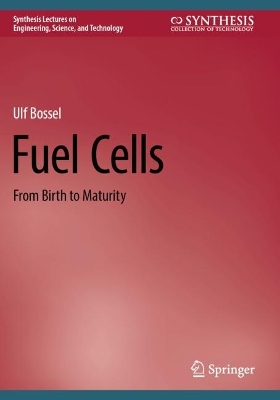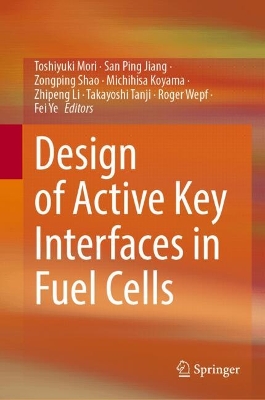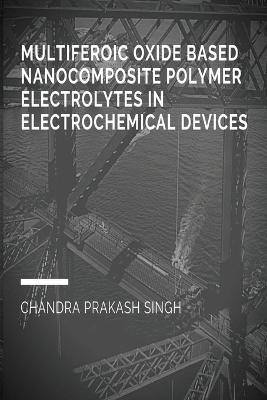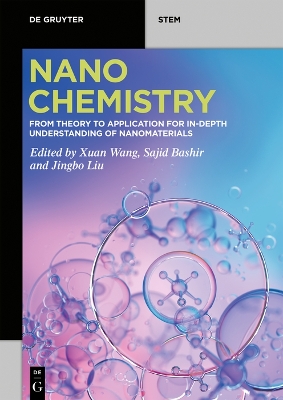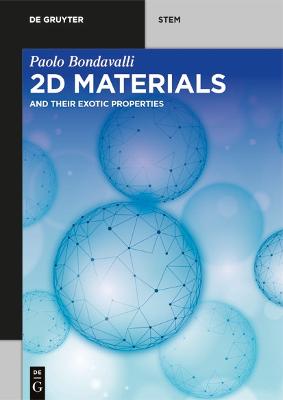Nanostructured Materials for Lithium/Sulfur Batteries
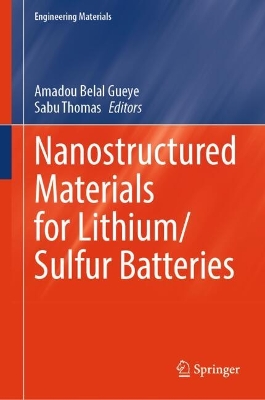 portes grátis
portes grátis
Nanostructured Materials for Lithium/Sulfur Batteries
Gueye, Amadou Belal; Thomas, Sabu
Springer International Publishing AG
09/2024
741
Dura
9783031662256
15 a 20 dias
Descrição não disponível.
Part 1: Introduction to Lithium/Sulfur Batteries.- Chapter 1: Introduction, History, Advantages and Main problems in Lithium/Sulfur Batteries Systems.- Chapter 2: Electrochemistry and Basic Reaction Mechanism of Lithium metal/Sulfur Batteries.- Chapter 3: Characterization Methods for Lithium/Sulfur Batteries.- Part 2: Host Nanostructured Materials for Sulfur Cathode.- Chapter 4: Typical carbon-host materials.- Chapter 5: One-dimensional carbon-based host materials.- Chapter 6: Two Dimensional Carbon-Host Materials.- Chapter 7 : Three Dimensional Carbon Host Materials.- Chapter 8: Polymer Derived Carbon-Host Materials.- Chapter 9: Binder-free sulfur host materials.- Chapter 10: Metal Oxides as Sulfur Host Cathodes.- Part 3: Nanostructured Lithium Sulfide Cathode Materials for Lithium/Sulfur Batteries.- Chapter 11: Problems and Challenges in Lithium Sulphide Cathode.- Chapter 12: Lithium sulfide (Li2S)-metal nanocomposites.- Chapter 13 : Li2S-carbon nanocomposites.- Part 4: Nanostructured Hybrid Cathode Materials for Lithium/Sulfur Batteries.- Chapter 14: Carbon-based nanocomposites?.- Chapter 15: Metal Oxides based nanocomposites for Lithium-Sulfur Batteries.- Chapter 16: Conducting polymers-based Nano composites.- Part 5: Nanostructured Electrolyte Materials for Lithium/Sulfur Batteries.- Chapter 17: Aqueous Electrolytes for Lithium Sulfur Batteries.- Chapter 18: Non-Aqueous Electrolytes For Lithium-Sulfur Batteries.- Chapter 19: Ionic Liquid-Based Electrolytes for Lithium/Sulfur Batteries.- Chapter 20: Polymer Electrolytes for Lithium/Sulfur Batteries.- Chapter 21: Hybrid electrolytes for Li-S batteries.- Part 6: Nanostructured Separator and Interlayer Materials for Lithium/Sulfur Batteries.- Chapter 22: Different types of separators for Lithium sulfur battery.- Chapter 23: Functionalized polyolefin separators for lithium/sulfur batteries.- Chapter 24: Carbon-based interlayers.- Chapter 25: Carbon-metal oxide hybrid nanocomposites.- Chapter 26: Doped carbon-based materials as Li-S battery separator.- Chapter 27: Metal-doped carbon based nanostructured separator materials for Lithium/Sulfur Batteries.- Chapter 28: Polymer blend separators.- Chapter 29: Electrospun Nanofibers.- Part 7: Nanostructured anode Materials for Lithium/Sulfur Batteries.- Chapter 30: Stabilized lithium metal nanocomposite anode for high-performance lithium-sulfur batteries.- Chapter 31: Carbon-Li Nanocomposites as anode for lithium-sulfur battery.- Chapter 32: Silicon Based Materials.- Chapter 33: Silicon-Carbon-Lithium Hybrid Nanocomposites.- Part 8: Future Outlooks and Challenges.- Chapter 34: Lithium-Sulfur Batteries: from Lab to Industry and Safety.- Chapter 35: Future Market and Challenges of Lithium/Sulfur Batteries.- Chapter 36: Life cycle analysis of lithium sulfur batteries.
Este título pertence ao(s) assunto(s) indicados(s). Para ver outros títulos clique no assunto desejado.
LITHIUM/SULFUR BATTERIES;NANOSTRUCTURED;APPLICATIONS;COMPOSITES;NANOCOMPOSITES;sulphur cathodes
Part 1: Introduction to Lithium/Sulfur Batteries.- Chapter 1: Introduction, History, Advantages and Main problems in Lithium/Sulfur Batteries Systems.- Chapter 2: Electrochemistry and Basic Reaction Mechanism of Lithium metal/Sulfur Batteries.- Chapter 3: Characterization Methods for Lithium/Sulfur Batteries.- Part 2: Host Nanostructured Materials for Sulfur Cathode.- Chapter 4: Typical carbon-host materials.- Chapter 5: One-dimensional carbon-based host materials.- Chapter 6: Two Dimensional Carbon-Host Materials.- Chapter 7 : Three Dimensional Carbon Host Materials.- Chapter 8: Polymer Derived Carbon-Host Materials.- Chapter 9: Binder-free sulfur host materials.- Chapter 10: Metal Oxides as Sulfur Host Cathodes.- Part 3: Nanostructured Lithium Sulfide Cathode Materials for Lithium/Sulfur Batteries.- Chapter 11: Problems and Challenges in Lithium Sulphide Cathode.- Chapter 12: Lithium sulfide (Li2S)-metal nanocomposites.- Chapter 13 : Li2S-carbon nanocomposites.- Part 4: Nanostructured Hybrid Cathode Materials for Lithium/Sulfur Batteries.- Chapter 14: Carbon-based nanocomposites?.- Chapter 15: Metal Oxides based nanocomposites for Lithium-Sulfur Batteries.- Chapter 16: Conducting polymers-based Nano composites.- Part 5: Nanostructured Electrolyte Materials for Lithium/Sulfur Batteries.- Chapter 17: Aqueous Electrolytes for Lithium Sulfur Batteries.- Chapter 18: Non-Aqueous Electrolytes For Lithium-Sulfur Batteries.- Chapter 19: Ionic Liquid-Based Electrolytes for Lithium/Sulfur Batteries.- Chapter 20: Polymer Electrolytes for Lithium/Sulfur Batteries.- Chapter 21: Hybrid electrolytes for Li-S batteries.- Part 6: Nanostructured Separator and Interlayer Materials for Lithium/Sulfur Batteries.- Chapter 22: Different types of separators for Lithium sulfur battery.- Chapter 23: Functionalized polyolefin separators for lithium/sulfur batteries.- Chapter 24: Carbon-based interlayers.- Chapter 25: Carbon-metal oxide hybrid nanocomposites.- Chapter 26: Doped carbon-based materials as Li-S battery separator.- Chapter 27: Metal-doped carbon based nanostructured separator materials for Lithium/Sulfur Batteries.- Chapter 28: Polymer blend separators.- Chapter 29: Electrospun Nanofibers.- Part 7: Nanostructured anode Materials for Lithium/Sulfur Batteries.- Chapter 30: Stabilized lithium metal nanocomposite anode for high-performance lithium-sulfur batteries.- Chapter 31: Carbon-Li Nanocomposites as anode for lithium-sulfur battery.- Chapter 32: Silicon Based Materials.- Chapter 33: Silicon-Carbon-Lithium Hybrid Nanocomposites.- Part 8: Future Outlooks and Challenges.- Chapter 34: Lithium-Sulfur Batteries: from Lab to Industry and Safety.- Chapter 35: Future Market and Challenges of Lithium/Sulfur Batteries.- Chapter 36: Life cycle analysis of lithium sulfur batteries.
Este título pertence ao(s) assunto(s) indicados(s). Para ver outros títulos clique no assunto desejado.

